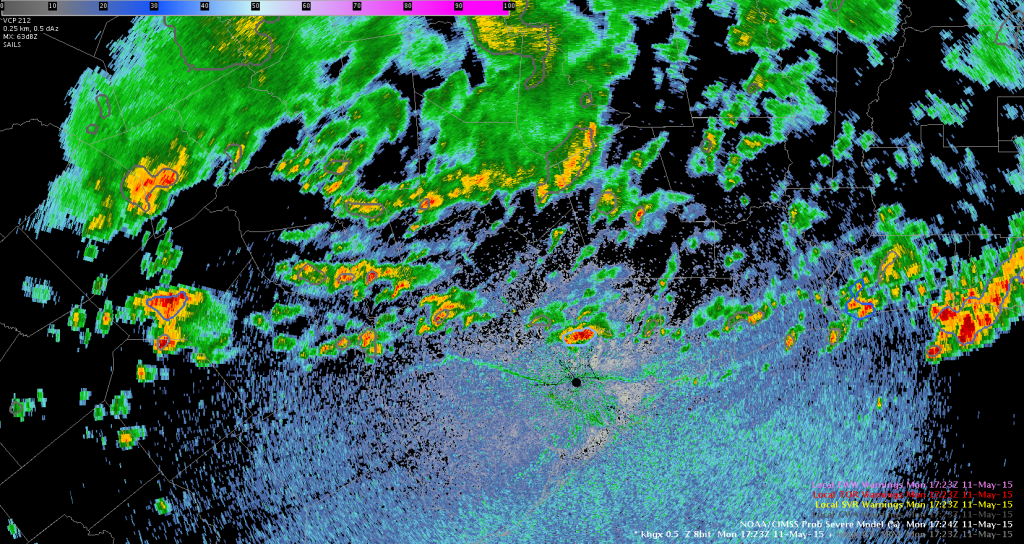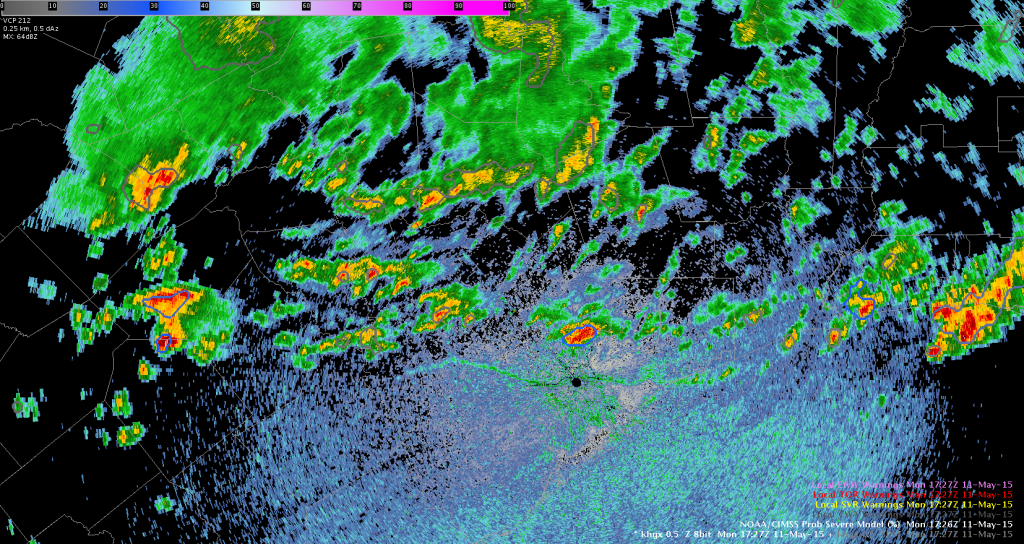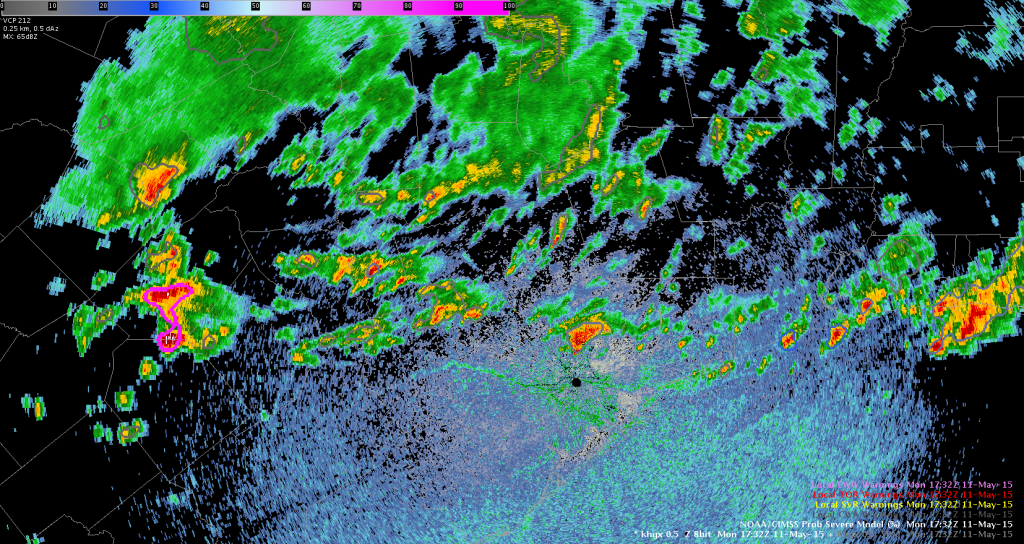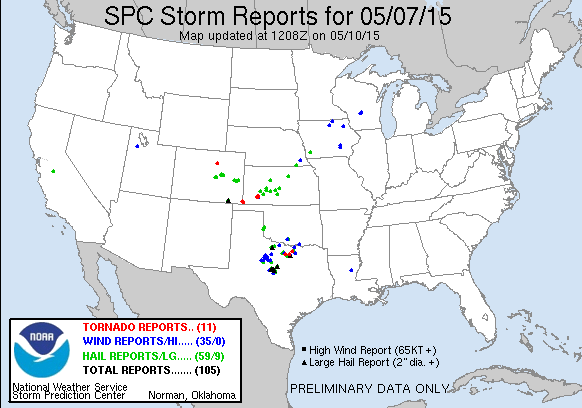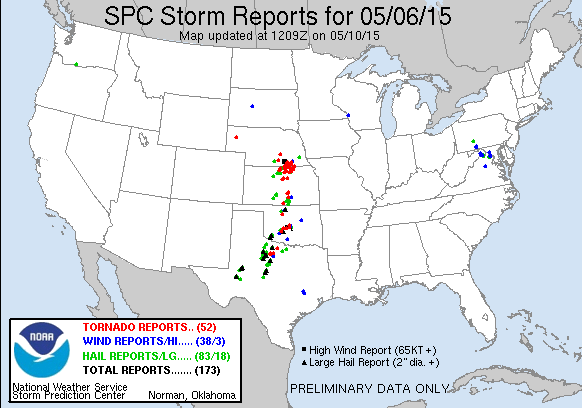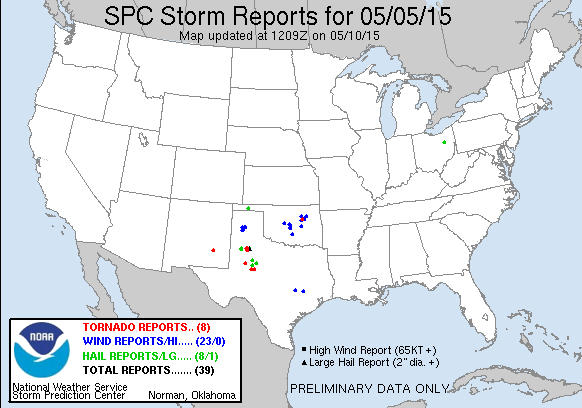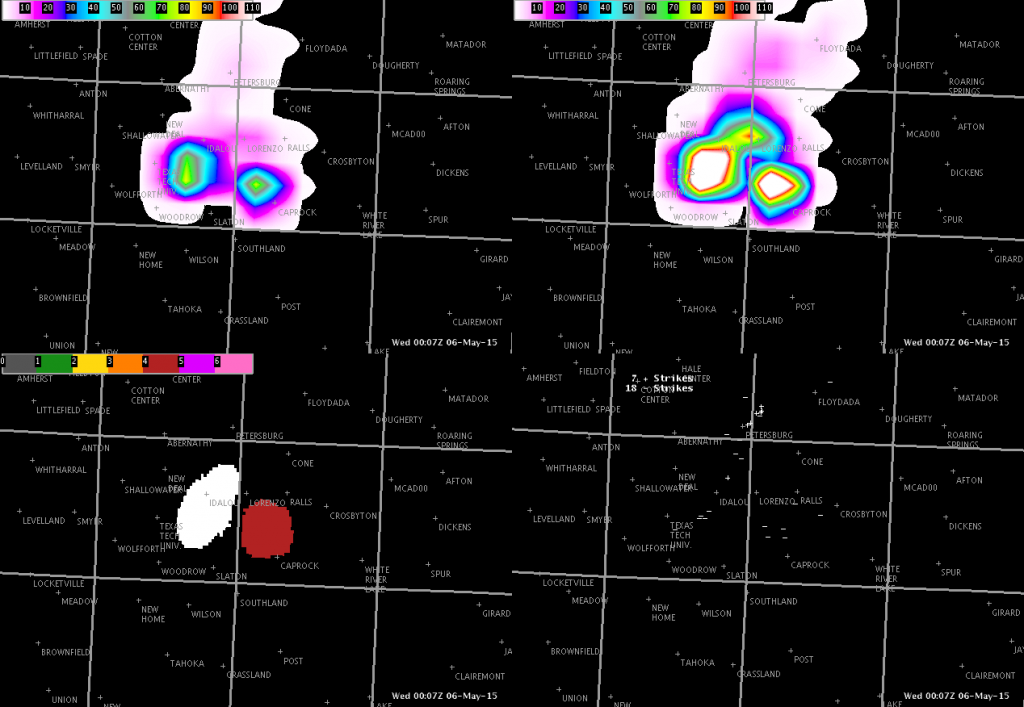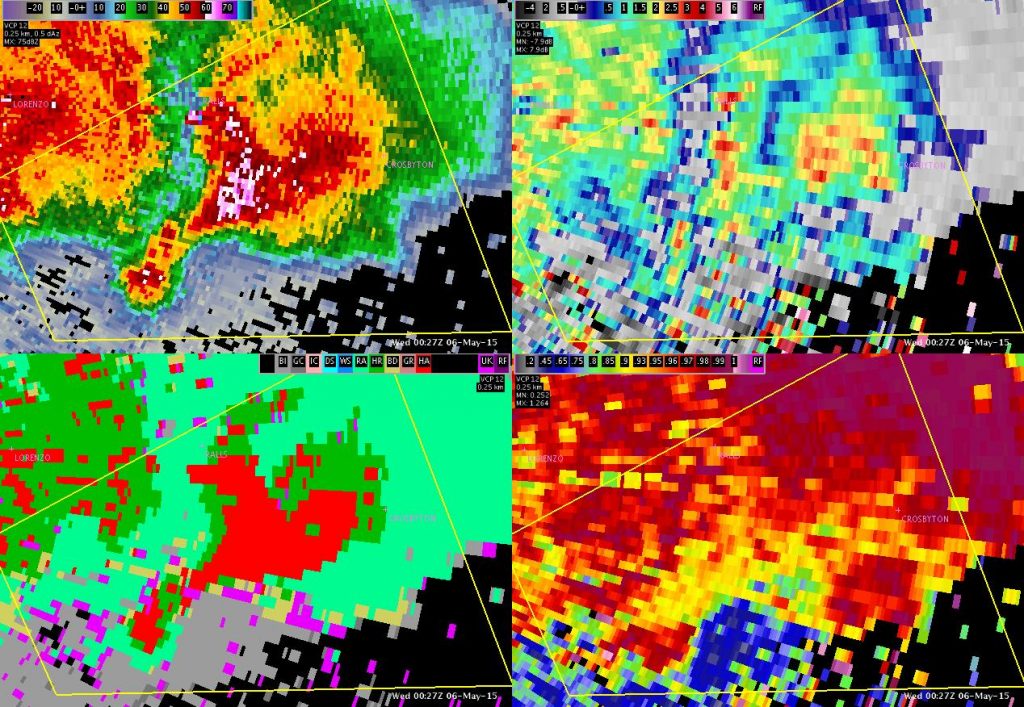During the first week of the 2015 EWP Spring Experiment, we had forecasters from the Newport, Columbia, Roanoke, Marquette, and San Diego WFO’s, as well as a broadcast meteorologist from KETV Omaha, NE participate in the Spring Warning Project. With most of the active weather confined to the Southern Plains throughout the week, our CWA’s of operations included: Topeka, Omaha, Wichita, Midland, Lubbock, Amarillo, Albuquerque, San Angelo, Norman and Hastings. We had a good mix of marginal and very busy severe weather days, with Wednesday being the most active weather day as severe weather broke out across central Oklahoma.
Participants were able to use all of the demonstration products this week, which included GOES-R and ENI total lightning products. There were many good blog posts written throughout the week highlighting the use of all of these products in various forecast/nowcast/warning situations. Below is some end-of-the-week feedback on each product from this weeks participants:
PGLM
– It was useful yesterday in the Lubbock CWA.
– I have a marine responsibility in my CWA, so the lightning data would be useful for issuing sub-severe forecast products for storms moving towards the coast.
– This lightning information would be useful in my CWA on days when the fire danger is heightened.
Lightning Jump
– I was not so sure if a 1 or 2 sigma jump was significant, or if I should wait for a 5 or 6 jump.
– At one point when things were active, I was ignoring the 1 sigma jumps. The 4 and 5 sigma jumps really drew my attention.
– 3-sigma was when I really started paying attention to the storm.
– 1-sigma is probably not even worth a color, I made it transparent.
ProbSevere
– It did a good job with discrete cells, but when the mode became more linear, it suffered
– It really drew my attentions to the storms that I should interrogate further
– For me, MESH in the readout does not need to read to hundredths of an inch.
– Color/highlight values in the text display as they become more significant. Make the actual probability stand out more too.
– For the color contour, I made it neon on the higher end, and got rid of the lower end. The low end looked almost the same as the higher end.
CI
– Overall it did a pretty good job throughout the week of highlighting where CI would occur
– It really works best in a clear environment (no cirrus contamination)
– When you had a cu field developing, it did a nice job of depicting where stuff would go
– I liked using it when we had a lot of boundaries, it did a good job of depicting where along the boundaries stuff would go. Especially today when there were a lot of different boundaries in play, it gave me confidence where convection would develop and where I should look.
– Having a higher threshold for CI would be more relevant in WFO operations, and less messy
– With the colortable, the lowest probs (deep blues) stood out the most, which is not what you want to see. The higher end colors against the light background were more difficult to see. Reduce the appearance of the lower probs make the higher probs stand out more.
– Perhaps you could start out with white to light gray at the low end, and transition to colors at the higher end.
GOES-R LAP
– I use the GOES PW field the most
– I would like to know what data are from the retrievals and what are from the GFS.
– The pixelation in certain areas was an issue, with sharp, unnatural transitions present between adjacent values.
NUCAPS
– It might be a good idea to merge this product with something like LAPS to improve the lower levels.
– I want to set this up as soon as I return to my office.
– I can see myself using this a lot in the winter.
– I esepcially like the observation-based nature of it
– I would like to look at this over Lake Superiror
– Anything that gives us a temperature profile will be helpful, especially in the winter.
– In San Diego, it will benefit us during the summer monsoon. Also, the San Diego RAOB is not representative of the mountains in our CWA
– QC flags would give me more confidence in the soundings, as it is difficult to judge with just the cloud data.
– The RAOBS in my area are not representative of most of my counties, so I often use forecast soundings.
– Bill Line, Week 1 EWP Coordinator and SPC/HWT Satellite Liaison





